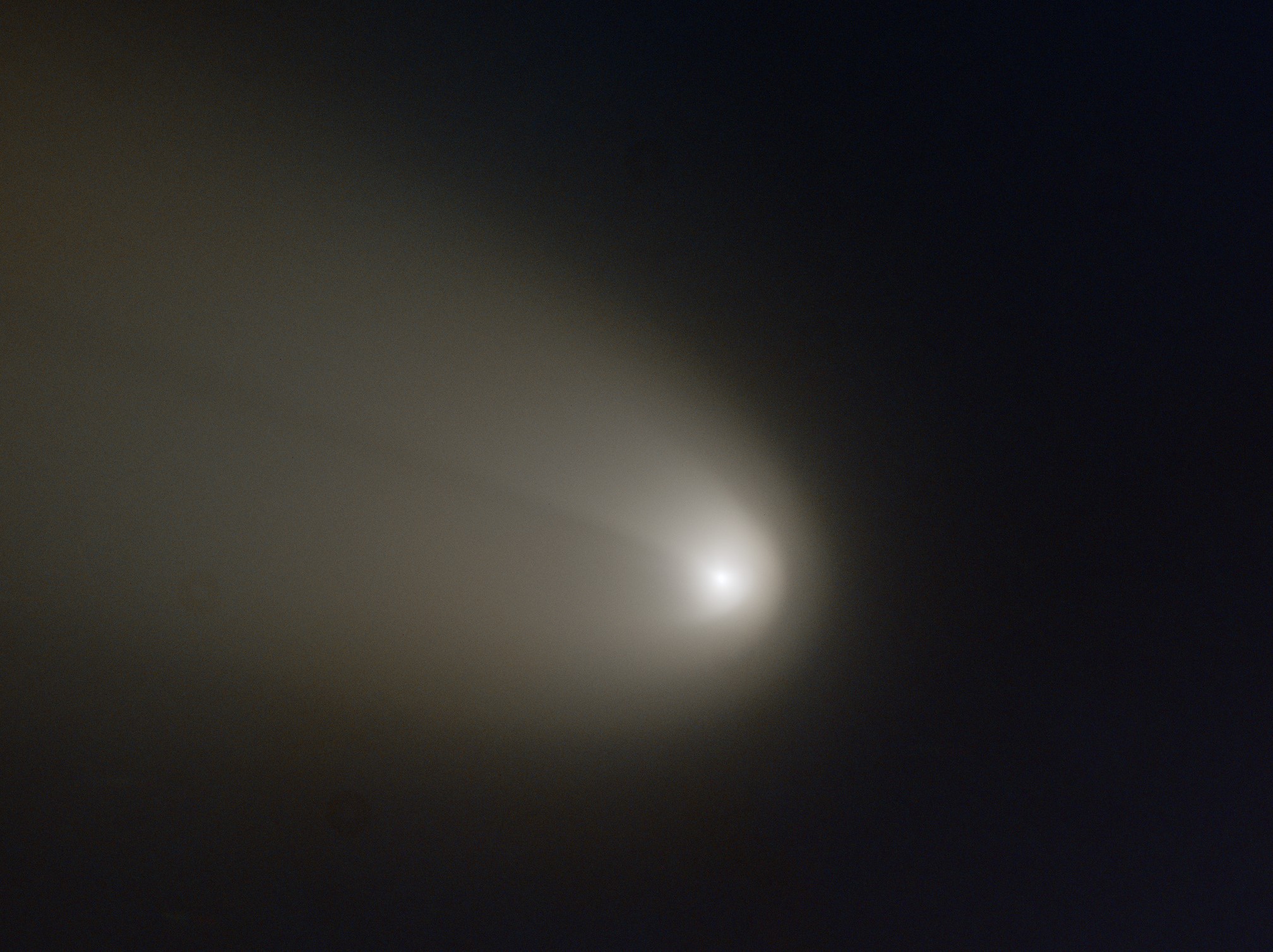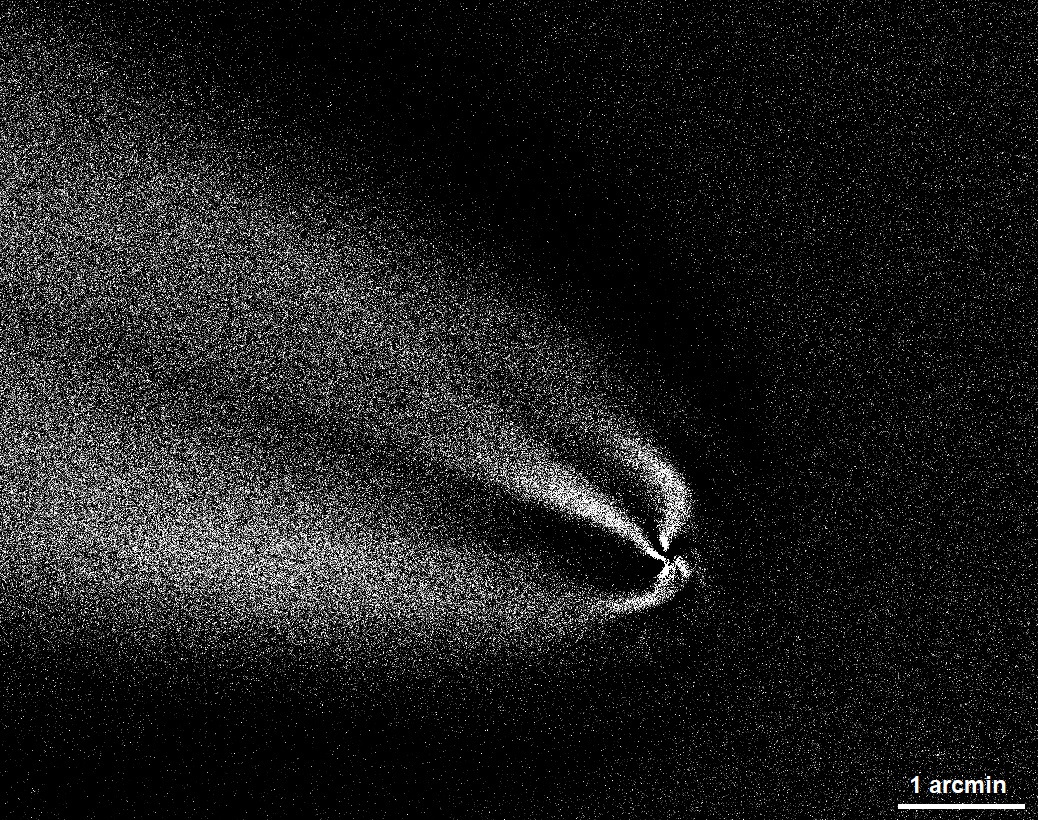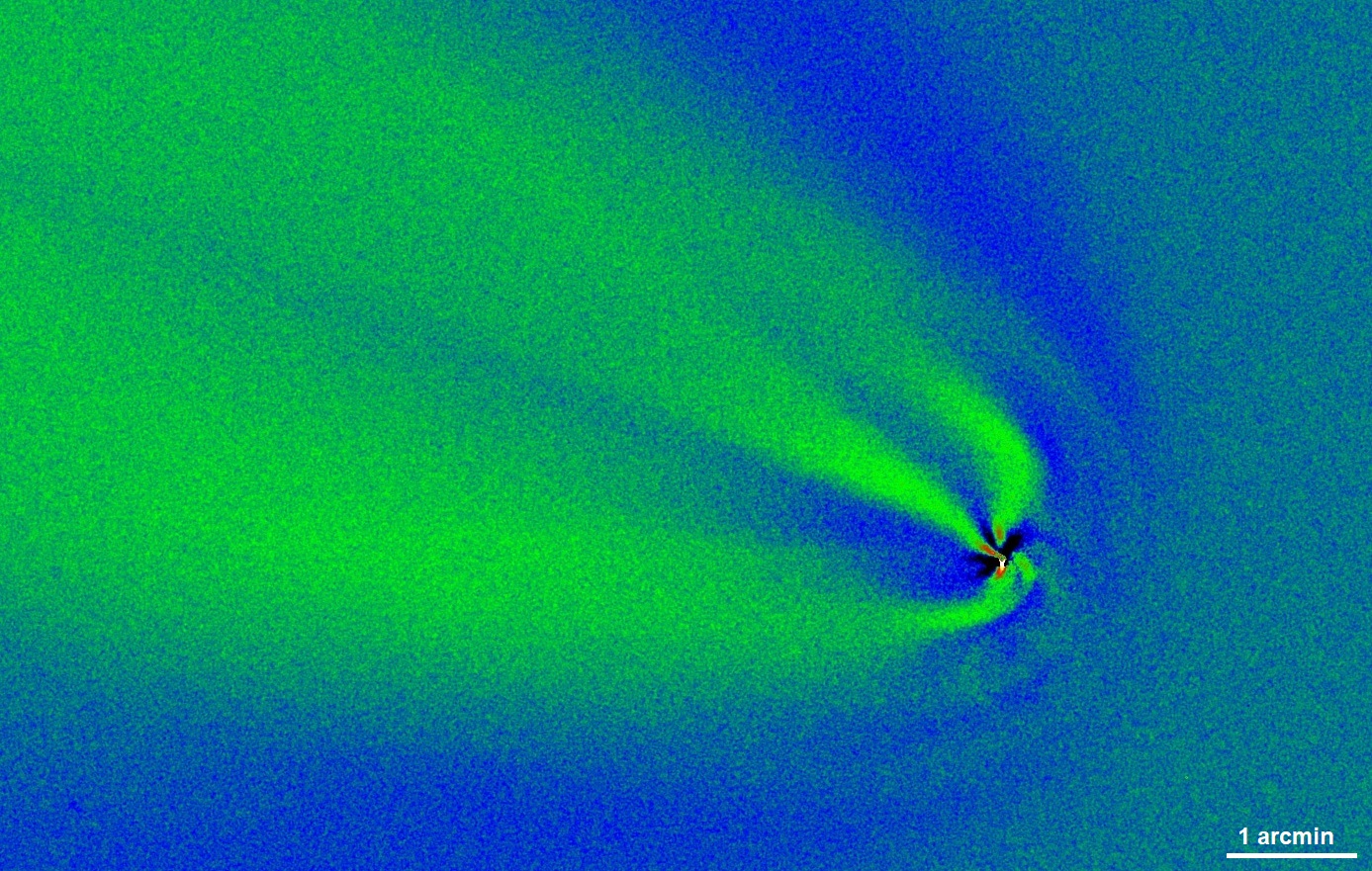Comet Tsuchinshan-ATLAS captured from the Montsec Observatory
- The comet reached its closest point to the Earth, some 70 million kilometres away, on 12 October
- The Joan Oró Telescope has allowed to obtain high quality images of the comet, with details of its dust envelope
- IEEC researchers at the Institute of Space Sciences (ICE-CSIC) and the Montsec Observatory have carried out this observation

Caption: Stacked 45-second exposure image with Johnson V, R and I filters of comet Tsuchinshan-ATLAS.
Credits: TJO/OdM.
On 12 October, comet Tsuchinshan reached its closest point to Earth, some 70 million kilometres away. The Montsec Observatory (OdM), managed by the Institute of Space Studies of Catalonia (IEEC — Institut d’Estudis Espacials de Catalunya) and located in the town of Sant Esteve de la Sarga (Pallars Jussà), obtained very detailed images of this wandering star on the evening of 14 October, despite the adverse weather conditions and its angular proximity to the Sun, which made observation difficult.
The comet, which was 72 million kilometres away from the Earth at that time, was clearly visible to the naked eye, as it had a magnitude similar to Deneb, one of the brightest stars. It showed off its majesty: the coma (the dust envelope surrounding the nucleus) was about the size of the Moon and the tail extended about 20° in length across the sky (the equivalent of joining about 40 moons in a row). A multitude of photographs of the comet have filled social media over the past few days.
Faced with this astronomical event of the first magnitude, two IEEC astrophysicists programmed an observational project with the Joan Oró robotic telescope located at the OdM. Josep M. Trigo, IEEC researcher at the Institute of Space Sciences (ICE-CSIC), and Kike Herrero, director of the OdM, wanted to find details of the comet’s coma with several image sequences made with multiple photometric filters. The impressive images obtained show the intense dust emission activity from the jets of sublimated gas generated from almost a dozen active regions.
In the words of Josep M. Trigo: “Although the actual nucleus of the comet is only about 3 km, too small and distant to be seen, its fragile and volatile nature means that close to the Sun it emits tons of gas and dust per second, making it a very extended and bright object. Even so, so much dust shields the core and makes it difficult to study. You have to do some detective work in the inner coma, an environment that is quite bright because it is rich in dust emitted from the nucleus.”
Comets are aggregates of ice, organic matter and tiny mineral grains. These particles (from centimetres to millimetres) are fragile, break away driven by the gas and also fragment when exposed to sunlight. This produces dust that, when it reaches micrometre size, is able to reflect sunlight.
“The inner coma, therefore, becomes a diffuse environment that cannot be resolved with small telescopes,” explains Kike Herrero. “Despite the challenge, telescopes with larger diameters, such as the Joan Oró Telescope, allow us to resolve spiral structures inside the coma,” added the expert. These jets of gas and dust bend under the radiation pressure from the Sun and generate intricate structures. From these images, researchers have to extract valuable information about the active regions of the comet’s nucleus and its dust production.

Caption: Image of comet Tsuchinshan-ATLAS in visible light treated with a Larson-Sekanina filter. At least eight gigantic jets of material emitted from the comet’s nucleus are visible.
Credits: TJO/OdM.

Caption: Image of comet Tsuchinshan-ATLAS in visible light treated with a Larson-Sekanina false-colour filter. It shows the complexity of the spiral structure of materials emitted from the comet’s nucleus.
Credits: TJO/OdM.
To visualise the turbulent environment of the inner coma, researchers apply several techniques to treat the images and make visible the jets of material emitted from the nucleus. A treatment with a so-called Larson-Sekanina filter shows the gigantic curtains of dust and gas that are released from the active regions by the sublimation of the ice and the pressure of the gas propelled into the interplanetary medium. Thus, we see how a comet near the Sun sublimates so much ice that it suddenly becomes a gigantic source of material because of its volatile nature. In fact, comets formed in regions far away from the Sun or other stars, at very low temperatures that have made them an amalgam of ices and small particles during the early phases of the formation of the Solar System.
The comet will still be accessible to the naked eye and binoculars for the next few nights but it will rapidly lose magnitude as it moves away at a relative velocity from the Earth of around 290 000 km/h. The latest dynamical calculations indicate that this object will eventually be lost in interstellar space following a hyperbolic orbit after its encounter with the Sun.
Contacts
IEEC Communication Office
Castelldefels, Barcelona
E-mail: comunicacio@ieec.cat
Lead Researcher at the IEEC
Castelldefels, Barcelona
Josep M. Trigo-Rodríguez
Institute of Space Studies of Catalonia (IEEC)
Institute of Space Sciences (ICE-CSIC)
E-mail: trigo@ieec.cat, trigo@ice.csic.es
About the IEEC
The Institute of Space Studies of Catalonia (IEEC — Institut d’Estudis Espacials de Catalunya) promotes and coordinates space research and technology development in Catalonia for the benefit of society. IEEC fosters collaborations both locally and worldwide and is an efficient agent of knowledge, innovation and technology transfer. As a result of more than 25 years of high-quality research, done in collaboration with major international organisations, IEEC ranks among the best international research centres, focusing on areas such as: astrophysics, cosmology, planetary science, and Earth Observation. IEEC’s engineering division develops instrumentation for ground- and space-based projects, and has extensive experience in working with private or public organisations from the aerospace and other innovation sectors.
The IEEC is a non-profit public sector foundation that was established in February 1996. It has a Board of Trustees composed of the Generalitat de Catalunya, Universitat de Barcelona (UB), Universitat Autònoma de Barcelona (UAB), Universitat Politècnica de Catalunya · BarcelonaTech (UPC), and the Spanish Research Council (CSIC). The IEEC is also a CERCA centre.
